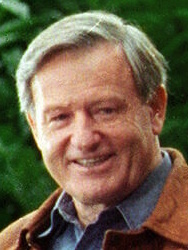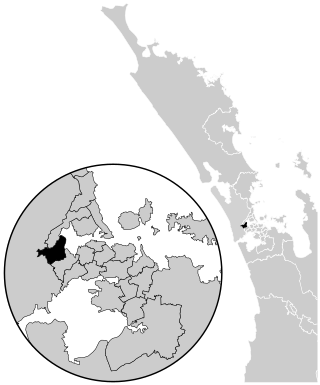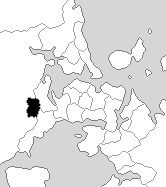
Christopher Joseph Carter is a former New Zealand Labour Party and independent Member of the New Zealand Parliament. He was a senior Cabinet Minister in the Fifth Labour Government of New Zealand, serving lastly as Minister of Education, Minister Responsible for the Education Review Office and Minister of Ethnic Affairs. He was the Member of Parliament for the Te Atatu electorate, where he was first elected in 1993. He did not win re-election in 1996, but won a new and expanded Te Atatu seat in 1999. In 2010, he was suspended from the Labour Party caucus following a dispute with party leader Phil Goff, shortly afterwards he became an independent MP. He was expelled by the Labour Party for breaching the Party's constitution in bringing the Party in disrepute, on 11 October 2010. In September 2011 Carter resigned from Parliament following his appointment to a United Nations position in Afghanistan where he served for 4 years. In 2015 he was appointed to head UN operations in Rakhine State in Myanmar where he served for 3 years. In 2018 he rejoined the New Zealand Labour Party and stood for election as a Labour Party representative in the 2019 New Zealand local elections. Carter was elected and appointed as Chairperson of the Henderson Massey Local Board with 11,250 votes. He also won election in 2019 as one of the seven elected board members of the Waitemata District Health Board with 14,593 votes. Both positions have three year terms.

The 1996 New Zealand general election was held on 12 October 1996 to determine the composition of the 45th New Zealand Parliament. It was notable for being the first election to be held under the new mixed-member proportional (MMP) electoral system, and produced a parliament considerably more diverse than previous elections. Under the new MMP system, 65 members were elected in single-member districts by first-past-the-post voting, while a further 55 "top-up" members were allocated from closed lists to achieve a proportional distribution based on each party's share of the nationwide party vote.

The 1993 New Zealand general election was held on 6 November 1993 to determine the composition of the 44th New Zealand Parliament. Voters elected 99 members to the House of Representatives, up from 97 members at the 1990 election. The election was held concurrently with an electoral reform referendum to replace the first-past-the-post system, with all members elected from single-member electorates, with mixed-member proportional representation. It saw the governing National Party, led by Jim Bolger, win a second term in office, despite a major swing away from National in both seats and votes, and the carrying of the referendum by 53.9% to 46.1%.

The 1969 New Zealand general election was a nationwide vote to determine the shape of Parliament's 36th term. It saw the Second National Government headed by Prime Minister Keith Holyoake of the National Party win a fourth consecutive term. This is the most recent election where an incumbent government won a fourth term in office.
Brian Kevin Neeson is a New Zealand politician. He was an MP from 1990 to 2002, representing the National Party, and a member of the Waitematā District Health Board from 2004 to 2010.
Aoraki was a New Zealand parliamentary electorate that existed for four parliamentary terms from 1996 to 2008. It was held by Jim Sutton of the Labour Party for three terms, and the remaining term by Jo Goodhew of the National Party. It was located in the South Island, covering southern Canterbury and northern Otago. It was named after the mountain Aoraki / Mount Cook.
Banks Peninsula is a New Zealand parliamentary electorate which initially existed from 1996 to 2008, and was later recreated in 2020 ahead of the 2020 election. It was held by National's David Carter for the initial term, and then by Labour's Ruth Dyson from 1999 to 2008. As of 2023, the seat is currently held by National's Vanessa Weenink.

Christchurch Central is a New Zealand parliamentary electorate in the South Island city of Christchurch. The electorate was established for the 1946 election and, until 2011 had always been won by the Labour Party. Since 2008, the incumbent was Brendon Burns but the election night results for the 2011 election resulted in a tie; the special vote results combined with a judicial recount revealed a 47-vote majority for Nicky Wagner, the National list MP based in the electorate. Wagner significantly increased her winning margin in the 2014 election after having declared the electorate "unwinnable" for National earlier in the year following a boundary review. At the 2017 election Wagner lost the seat to Labour's Duncan Webb, who retained it at the 2020 election.

Epsom is a New Zealand electorate in Auckland, returning one Member of Parliament to the New Zealand House of Representatives. Since the 2014 general election, Epsom has been represented by David Seymour, the leader of the ACT Party.

Māngere is a New Zealand parliamentary electorate, returning one member of parliament to the Representatives of New Zealand. The current MP for Māngere is Lemauga Lydia Sosene of the Labour Party. She has held this electorate since 2023.

New Lynn is a New Zealand parliamentary electorate, returning one member to the New Zealand House of Representatives. Deborah Russell of the Labour Party represented the electorate from the 2017 general election before being defeated by National's Paulo Garcia in the 2023 election.

Te Atatū is a parliamentary electorate, returning one Member of Parliament to the New Zealand House of Representatives. The current MP for Te Atatū is Phil Twyford of the Labour Party.

Waitakere was a parliamentary electorate, returning one Member of Parliament to the New Zealand House of Representatives. The electorate was first formed for the 1946 election and existed until 2014, with breaks from 1969 to 1978 and from 1987 to 1993. The last MP for Waitakere was Paula Bennett of the National Party, who had held this position since the 2008 election.

Te Tai Tokerau is a New Zealand parliamentary Māori electorate that was created out of the Northern Maori electorate ahead of the first Mixed Member Proportional (MMP) election in 1996. It was held first by Tau Henare representing New Zealand First for one term, and then Dover Samuels of the Labour Party for two terms. From 2005 to 2014, it was held by MP Hone Harawira. Initially a member of the Māori Party, Harawira resigned from both the party and then Parliament, causing the 2011 by-election. He was returned under the Mana Party banner in July 2011 and confirmed at the November 2011 general election. In the 2014 election, he was beaten by Labour's Kelvin Davis, ending the representation of the Mana Party in Parliament.
Titirangi is a former New Zealand parliamentary electorate. It existed from 1987 to 2002, with a break from 1996 to 1999. It was represented by four members of parliament, with three of them from Labour and one from National.

Taupō is a New Zealand parliamentary electorate returning one Member of Parliament to the House of Representatives. Taupo first existed between 1963 and 1981, and was recreated for the introduction of MMP in 1996. The current MP for Taupō is Louise Upston of the National Party. She has held this position since 2008.

Henderson is a former New Zealand parliamentary electorate, from 1969 to 1978 and then from 1993 to 1996.
The 2011 New Zealand voting system referendum was a referendum on whether to keep the existing mixed member proportional (MMP) voting system, or to change to another voting system, for electing Members of Parliament to New Zealand's House of Representatives. It was held on 26 November 2011 in conjunction with the 2011 general election.
Ohariu-Belmont was a New Zealand parliamentary electorate from 1996 to 2008.

Kelston is a New Zealand parliamentary electorate that returns one member to the House of Representatives. It was first formed for the 2014 election and was won by Labour's Carmel Sepuloni, who has held the electorate since.













